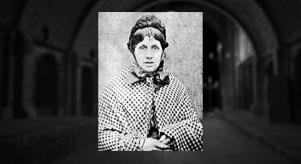
The Murder of April Jones - Keri Nixon
The murder of April Jones in 2012 was the kind of murder that leaves every parent terrified of letting their children out of their sight. A 5 year old little girl snatched from a peaceful, small and seemingly ‘safe’ community and when the offender is from the community it shocks everyone involved. Mark Bridger then enacted the worst final blow on April’s parents by refusing to ever reveal what he did with her and pleading not guilty to her murder.
Then, as the case against Mark Bridger progressed we learned more about the man behind the horrific abduction and murder of April. He had previous convictions for violence, but no previous convictions for sexual abuse. He was a man who appeared to wander through life, unable to remain in a steady job for long. Despite this, many people described him as a friendly, charming man. We now know that he was a pathological liar, a fantasist and someone who had a taste for very disturbing online indecent images. The police uncovered an extensive collection of child abuse material on his computer. There are 5 levels of indecent images to reflect severity. The images found on Bridger’s computer included all levels – graphic depictions of rape and abuse. He also had pictures of previous young murder victims and pictures of girls living in the local area (taken from social media sources). This gives us some insight to the workings of his mind prior to him abducting April. But, what do we know about the link between viewing indecent online images of children and contact sexual offending?In the same year April was murdered, CEOP (Child Exploitation & Online Protection Centre) published a report (The Picture of Abuse) underlining the significant risk posed by those that possess indecent images of children. This report highlighted a link between non-contact ‘image’ offending and sexual contact offending. Causation between viewing indecent images online and contact sexual offences is not completely established. However, research tells us that between 77-87% of convicted child offenders use indecent images to stimulate themselves. CEOP’s reports also highlighted the increasing volume of child abuse material online and analysis by the Internet Watch Foundation shows that the images are becoming more extreme, sadistic and violent. This is deeply worrying – I have often been told by contact sex offenders when working in prisons that they viewed images of children and before the days of the internet they would often use seemingly innocent images (catalogues etc.) The extreme nature of images readily available now can only further desensitise offenders and thus create more dangerous urges.What responsibility do internet providers have in stopping access to such images?April’s parents, Paul and Coral have been fighting for the government and internet providers to provide more restrictions on what material people can access online. In July, 2013, David Cameron called on internet search engines like Google and Bing to limit access to child sexual abuse online. They have agreed to block access to child abuse web searches and an additional 13,000 search terms will return warning messages, which of course, is a good thing.
But is this enough?Broader initiatives are needed as offenders will just evolve and find other ways to find images. Of course any method that limits access is a good thing – if one child can be saved that is a success. But unfortunately any experienced sex offender will learn new methods – the dark web is becoming more popular with criminals and sex offenders. Most paedophiles now use sources other than google to access images. Fact – there is no ‘typical’ consumer of indecent images and thus technical approaches alone are not the answer. As April’s parents have argued – if someone is looking at images and feels they may offend they need a place to go and seek help. Social issues, better protection of children, more resources given to police high tech crime units, risk assessment of online offenders are all needed in the fight against online child abuse and access to indecent images. One method alone will not work in the fight against child abuse.




